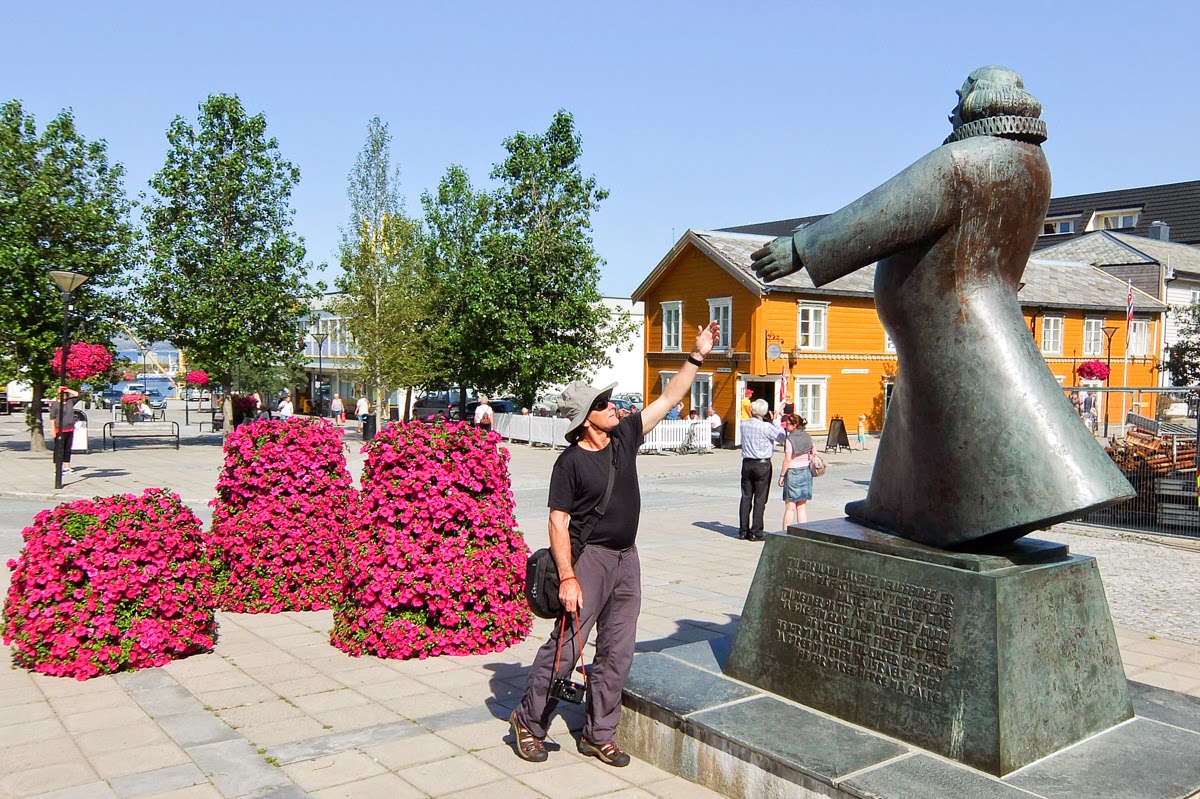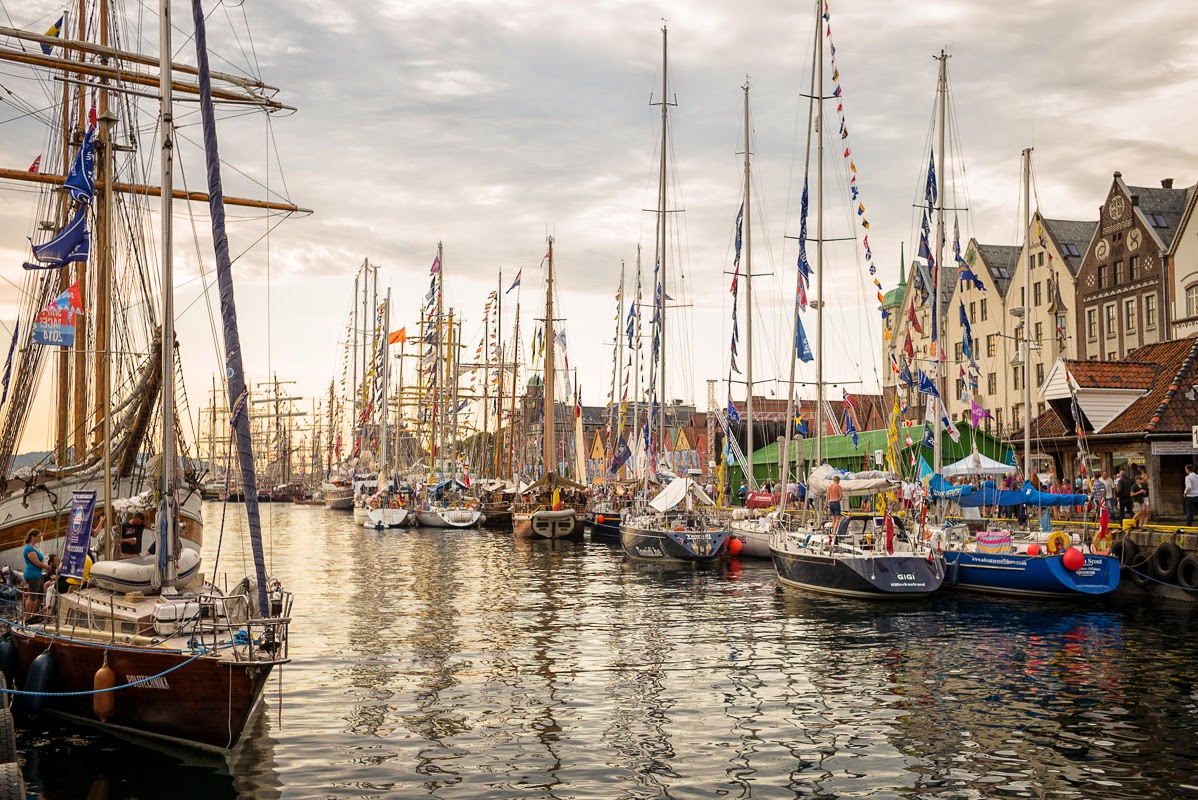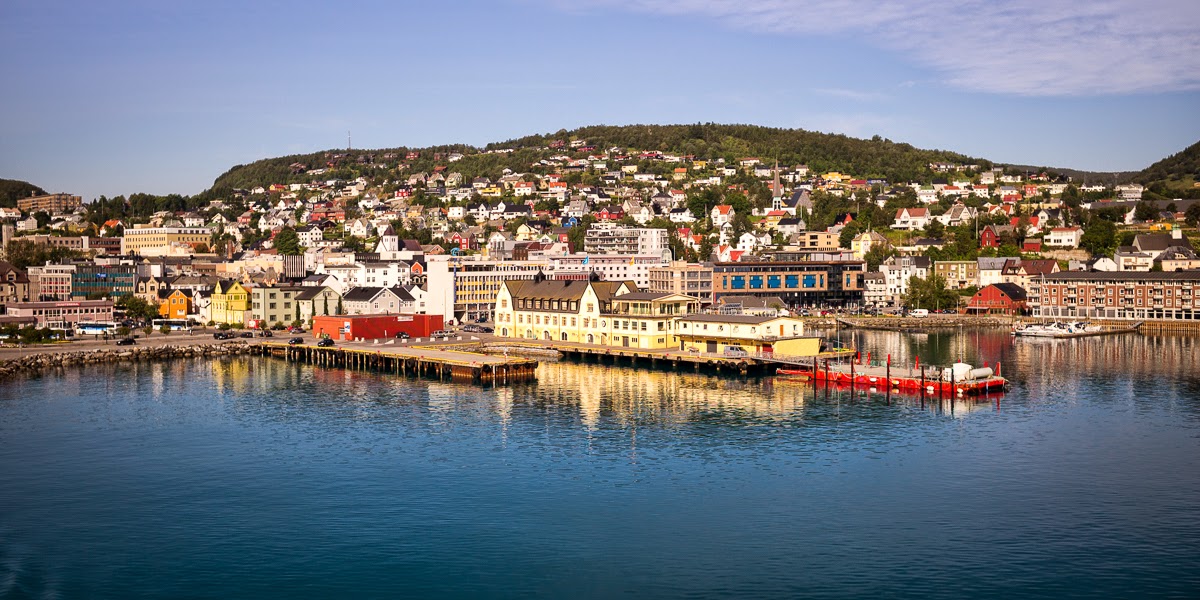Norway
And so the Icelandic trip came to an end. Sixteen days of amazing sights. We took in a free photographic exhibition at the Reykjavik library (where, incidentally they have special play areas for kids including wardrobes of dress-up costumes and free coffee for the mums) by a guy called Ragnar Axelsson. Beautiful pictorial documentary of a disappearing way of life amongst hunters in Greenland plus volcanic and other nature scenes in Iceland. On top of the Annie Liebowitz exhibition in Singapore and the Sebastian Salgado one in Stockholm we have been well and truly lucky to see such great photographic artists.
Anyway, the flight to Norway was a 2x2 affair - 2 hours at the airport, 2 hour flight, 2 hour time difference, 2 hour stopover, another 2 hour flight and suddenly it was 8:30 pm and we were in Kirkenes, northern Norway. Pretty much barren and rocky landscape. Down to the harbour next morning and onto the MS Midnatsol, Hurtigruten’s latest ship, for a week of post-camping relative luxury. Soft beds, dark cabin, free flowing hot water and electricity. Unlimited, fabulous food and wine from all corners of the globe.
The Hurtigruten means ‘fast route’ and refers to the early days when shipping was the primary means of transporting people and goods from the south to the north. Road travel hardly existed and the sea travel was largely weather dependent. Before 1893 voyages were infrequent - at best once a week in summer and not at all in winter. Tenders were called for someone to sail weekly throughout the year - with no takers but one, a plucky little seaman from the Vesterålen (Lofoten) by the name of Richard With who maintained that, given his years of experience sailing the northern regions he could meet the demand. And so he did, moving people, goods and mail from Trondheim in the south to Hammerfest in the north in just three days, as opposed to the three weeks (or three months in the worst case) by road. Hence the 'fast route'. Immediately it became popular with Norwegians wanting to travel purely for enjoyment - to see their beautiful coastline and the rest is history. Today it’s a slick operation with a large, continually updated fleet and departures every day from Bergen in the south and Kirkenes in the north.
 |
| Enjoying a dip in the spa and a bit of welcome sunshine |
 |
| Our ship, the MS Midnatsol, about to be enveloped by fog |
 |
| Self explanatory really. A nice spot for a pre-dinner drink. |
 |
| Admiring the view in Svolvær. |
 |
| Going for a stroll in Vardø |
 |
| Fog quickly rolls in over the town |
 |
| A fine morning at one of the many ports along the route |
 |
executing a U-turn in the Trollfjord, scene of a famous battle between oar-powered and steam-powered Norwegian fishing boats
It’s almost surreal to be sitting in one of many quiet little areas just watching the islands with their quaint little villages glide by. Towering cliffs here, snow capped peaks there and colourful little fishing boats of red, yellow and blue. It’s hard to take your eyes from the scenery in case you miss something grander than before and just to confirm we are actually moving, so calm are the waters. Just like a millpond.
|
 |
| delicious locally grown strawberries |
 |
| Midnatsol entering Trollfjord. We were ahead in a smaller vessel on the lookout for sea-eagles. |
 |
| Svolvær harbour |
The weather is unseasonally warm with temperatures reaching 22 C in the Arctic circle. Not that it’s always this way. The northbound route, before we embarked had seven days of travelling in a fog where hardly anything was visible. We experienced this first hand also when, one minute there is bright sunshine and the next is impenetrably thick fog cutting visibility.
 |
| No fog in this lovely fjord near North Cape |
 |
| Sue testing the waters of the Arctic Sea (5 degrees C) and still no fog. |
 |
| Just a little bit of fog. Now you see it... |
 |
| Now you don't. |
 |
| A bright sunny morning just above the Arctic Circle. Glassy seas. |
We have interrupted this tranquil state of affairs to go ashore on occasion, either to visit monuments or museums or just ramble among the villages. The North Cape was a must-do for us and at 71 plus degrees North it’s a long way from home - a 5:30 am start with breakfast in the cafe at the cape. Apart from the monument and restaurant there was an Imax theatre which played a short film showing the area throughout all four seasons. So now we’ve seen it and don’t have to come back in winter! Along the way we saw lots of reindeer which, although appearing to be wild are not. They all belong to the indigenous Sami. (Don’t call them Lapplanders which in their tongue means dishcloth)! Reindeer was on the menu that night. I tried (unsuccessfully) to send an email warning the children that Santa may not find them this year because we had just eaten Rudolf but fortunately we hadn’t because we saw him alive and well the next day. If you don’t believe that then check out the picture. The camera doesn’t lie!
Sadly, no sea-eagles! The story goes like this. The eagles could not be lured to the boat by tiny morsels of rotting mackerel when they were so overfed on whole fresh ones brought to the surface for a spot of sun basking by the exceedingly warm and sunny weather. The gulls on the other hand - well it was bit like the Venetian gondolas in the Monty Python travel documentary.
On Tuesday 22nd July we crossed the Arctic circle heading south. To mark occasion we took part in a special ceremony, involving (an excessively large) teaspoon of cod liver oil accompanied by some cock and bull story about lack of sun and ipso facto Vitamin D. Pity about the taste. Needless to say we bolted for the cabin and the secret stash of Glenfiddich.
 |
| Passing the Arctic Circle globe heading southwards. |
 |
| Moments before the look of shock and horror occasioned by downing the teaspoon of cod liver oil |
South of the arctic circle we entered the beginnings of the agriculture. The islands are still mountainous and rocky, but cloaked with dark green with fir trees and a surrounded by a belt of light green around the perimeter like a hat band. Secret sandy beaches which may never have known footprints appear from time to time.
The further south we go the warmer it gets and last night we witnessed the sun setting for the first time in weeks, albeit at 11pm. The countryside is changing. More farms and bigger towns. Trondheim dates back to the tenth century and was an original seat of power for King Olav. Leif Ericsson sailed from there to Vinland ( as North America was then called) long before it was 'discovered' by Christopher Columbus.
One more night aboard then dock in Bergen where we will overnight before flying out to Gothenberg and joining Don and Sigrid for a few days.

















































































